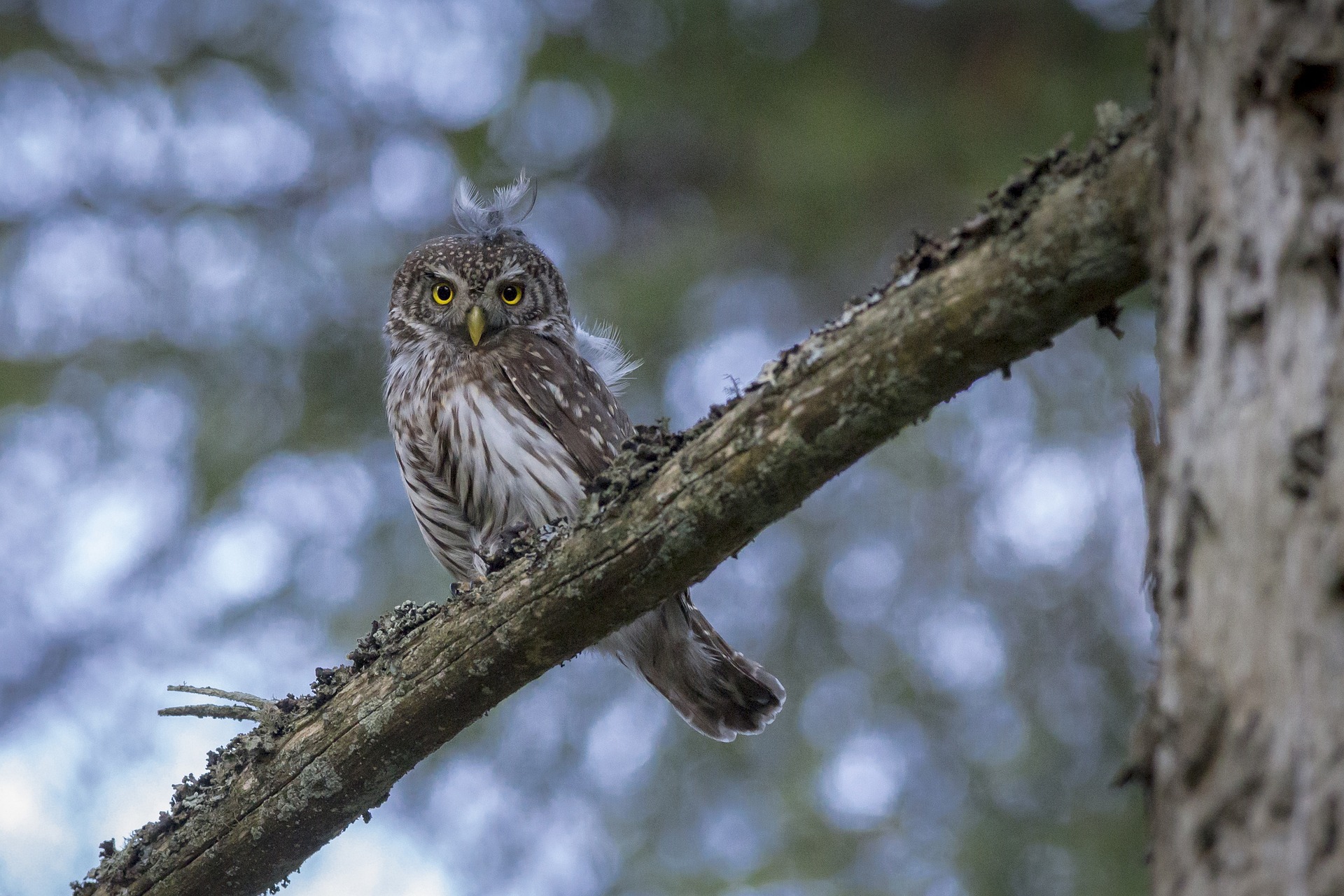The Eurasian Pygmy Owl (Glaucidium passerinum) is the smallest owl species found in Europe and one of the smallest in the world. Here are some key features and characteristics of the Eurasian Pygmy Owl:
- Size: The Eurasian Pygmy Owl is tiny, measuring only about 15 to 17 centimeters (6 to 7 inches) in length. It has a wingspan of around 35 to 40 centimeters (14 to 16 inches). Despite its small size, it has a compact and robust build.
- Appearance: This owl species has a round head with distinctive yellow eyes, surrounded by a dark facial disk. Its plumage varies in coloration but generally includes shades of brown, gray, and white, providing excellent camouflage against tree bark. The underparts are typically lighter in color than the upperparts, and the back is often marked with spots or streaks.
- Habitat: Eurasian Pygmy Owls inhabit a variety of forested habitats, including coniferous forests, mixed woodlands, and deciduous forests. They prefer areas with dense vegetation and a mix of open spaces and trees, which provide suitable hunting grounds for small prey.
- Diet: Despite its small size, the Eurasian Pygmy Owl is a formidable predator, feeding primarily on small birds, mammals, and insects. Its diet may include sparrows, finches, tits, mice, voles, and large insects such as beetles and moths. It hunts mainly during the day but may also be active at dawn and dusk.
- Behavior: Eurasian Pygmy Owls are primarily solitary birds and are often encountered alone or in pairs. They are highly territorial and will defend their territory vigorously against intruders, including larger birds of prey. They are skilled hunters and use a sit-and-wait strategy to ambush their prey from a concealed perch.
- Vocalization: The call of the Eurasian Pygmy Owl is a distinctive series of whistled notes, often described as resembling the sound of a bouncing ball. Both males and females use vocalizations to communicate with each other and establish territory boundaries.
- Breeding: Breeding occurs in spring, with females laying a clutch of 3 to 7 eggs in a tree hollow or abandoned woodpecker nest. Incubation lasts for about 3 to 4 weeks, and both parents participate in caring for the young. The chicks fledge at around 4 weeks old but may remain dependent on their parents for several more weeks.
- Conservation: The Eurasian Pygmy Owl is not considered globally threatened, although local populations may face threats from habitat loss, fragmentation, and human disturbance. Conservation efforts aimed at preserving and restoring suitable forest habitats are important for ensuring the long-term survival of this species.
Overall, the Eurasian Pygmy Owl is a fascinating and charismatic owl species known for its small size, fierce hunting skills, and distinct vocalizations.
Views: 14
Subscribe to the newsletter:
